What to do if CB1 opens repeatedly in Miller Welding System?
- SseangonzalezSep 12, 2025
If the CB1 repeatedly opens, causing the Miller Welding System to become completely inoperative, have a Factory Authorized Service Agent check the unit.
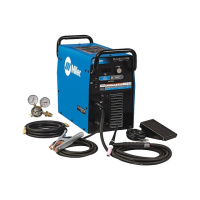
What to do if CB1 opens repeatedly in Miller Welding System?
If the CB1 repeatedly opens, causing the Miller Welding System to become completely inoperative, have a Factory Authorized Service Agent check the unit.
Why is the fan not operating on my Miller Power Supply?
Your Miller Power Supply is equipped with Fan-On-Demand, so the fans only run when necessary. The unit also has circuitry to protect against overheating.
| Input Frequency | 50/60 Hz |
|---|---|
| Amperage Range | 10 - 165 A |
| Weldable Materials | Steel, Stainless Steel, Aluminum |
| Weight | 50 lb (22.7 kg) |
| Processes | TIG (GTAW), Stick (SMAW) |
| TIG Lift Arc | Yes |
| Input Voltage | 120 V / 240 V |
| Input Phase | 1-Phase |
| Stick Electrode Size | Up to 3/32 in |
| TIG Electrode Size | Up to 3/32 in |
Explanation of warning symbols used throughout the manual to indicate potential hazards.
Details on dangers associated with arc welding, including electric shock and proper grounding.
Covers risks from fumes, gases, arc rays, fire, explosions, EMF, and noise.
Addresses risks from gas cylinders, falling equipment, moving parts, sparks, and electrical hazards.
Details additional symbols related to installation, operation, and maintenance procedures.
Information on HF and arc welding interference, Prop 65, safety standards, and EMF.
Details and meanings of additional safety symbols and related definitions for hazard identification.
Glossary of common symbols and their meanings for operational context and understanding.
Guidance on finding the unit's serial number and rating information for identification.
Detailed electrical and performance specifications for Diversion 180 and Diversion 165 models.
List of items that come standard with the welding power source package.
Physical size and weight specifications for the welding unit, aiding in placement and handling.
Details on IP rating and operating/storage temperature ranges for optimal equipment performance.
Graphical representation of output amperage versus duty cycle for different models to prevent overheating.
Guidance on choosing a suitable and safe location for the welding unit, considering airflow and movement.
Information on using the dedicated receptacle for connecting an optional foot control pedal.
Procedures and tools required for connecting the shielding gas supply to the unit.
Electrical requirements and recommendations for connecting the Diversion 165 model to power.
Electrical requirements and recommendations for connecting the Diversion 180 model to power.
Guidelines for choosing the correct extension cord based on voltage and length to minimize voltage drop.
Step-by-step instructions for connecting the Diversion 165 to a 230V input power source.
Instructions for connecting the Diversion 180 to a 115V input power source, detailing the Auto-Line feature.
Instructions for connecting the Diversion 180 to a 230V input power source, detailing the Auto-Line feature.
Guide to selecting and connecting the appropriate MVP plug for various power supply receptacles.
Detailed explanation of the controls and indicators on the Diversion 165 model.
Detailed explanation of the controls and indicators on the Diversion 180 model.
Recommended maintenance tasks and their frequencies to ensure optimal performance and longevity.
Information regarding the unit's circuit breaker and its function in protecting the equipment.
Interpretation of error codes and displays shown on the unit's meter for fault diagnosis.
A table listing common problems and their suggested remedies for user-level troubleshooting.
Detailed electrical schematic illustrating the internal components and wiring of the Diversion 165.
Detailed electrical schematic illustrating the internal components and wiring of the Diversion 180.
Explanation of which welding processes utilize high frequency for arc starting and stabilization.
Identification of common sources that can cause or contribute to high frequency interference in the work area.
Guidelines for proper installation and grounding to minimize high frequency interference.
Recommendations for selecting tungsten electrode diameter, type, and amperage range for different materials.
Overview of different tungsten types, their properties, and recommended applications for welding.
Instructions on proper grinding techniques for tungsten electrodes to ensure stable arc performance.
Guidance on correct torch angle, tungsten extension, and arc length for effective TIG welding.
Techniques for moving the torch and filler rod during TIG welding for consistent weld beads.
Recommended torch and tungsten angles for various types of weld joints like butt, lap, and corner.
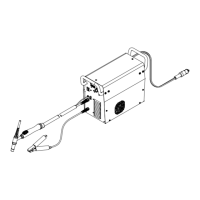
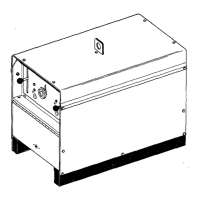
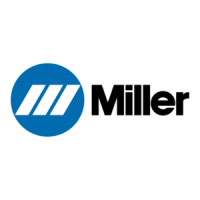
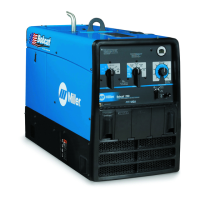
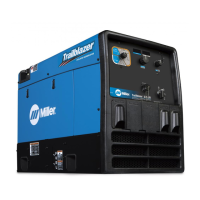
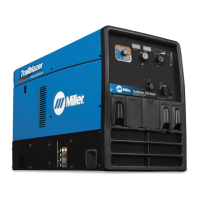
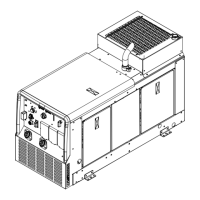
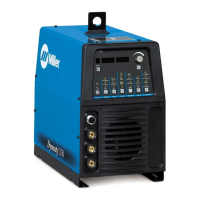
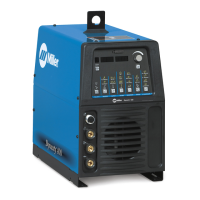

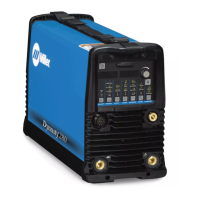

